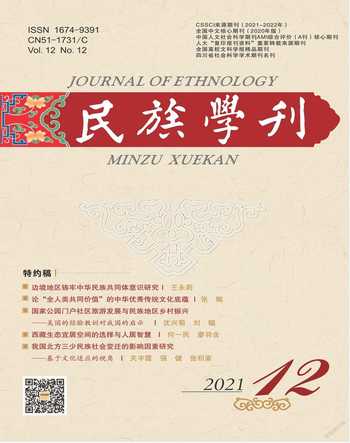Research on the Construction of a Public Services Happiness Index for Residents in a Multi睧thnic Embedded Community
Huang Manwen Jiang Ming
Abstract:Based on theoretical and empirical studies, this paper selects three different types of multiethnic embedded communities, and puts forward a model of measuring residents sense of happiness in multiethnic embedded communities based on differential site selection.This study proposes the following main conclusions:
First of all, this study puts forward a public services quality index of multiethnic embedded based on peoples sense of happiness . It analyzes the constituent factors that affect residents sense of happiness generated by public services in multiethnic embedded communities and divides them into five dimensions: community integration, community governance, community culture, community health care, and community education. According to geographical factors, historical factors, the proportion of resident ethnic minorities, and the degree of cultural integration between communities, three communities sufficiently matching the features of multiethnic embedded communities were selected as research sites.
In addition,the research suggests that: 1) community governance, community integration, and community culture are the main sources of residents happiness; 2) inhabitants having a sense of belonging arguably is the main criterion when testing the level of integration of multiethnic embedded communities; and 3) the construction of community culture also significantly seems to affect the peoples happiness. Due to the differences in embedding types and ethnic personnel composition among multiethnic embedded communities, the residents contentment with public services in the three multiethnic embedded communities selected in the survey also appears to be different from that of the five dimensions.
Not only that, the research conceivably shows that the construction of multiethnic embedded communities not only depends on economic development to enhance the happiness of its members, indeed, the supplydemand matching is also very important. In the process of creating a mutually embedded community, one should instead promote all aspects of community culture and structural function, allowing residents to participate in the management of community affairs through community activities, and cultivate residents community awareness.
Finally, based on relevant theories and empirical research results, this paper further strives to comb through the understanding of ethnic embedded communities. Making use of relevant branches of psychology, this paper also looks to define the connotation of multiethnic embedded communities, and on this basis, distinguish the various categories of multiethnic embedded communities. A “multiethnic embedded community” is not a relative concept restricted to only population proportion elasticity, but its formed by the intersectionality of economic, social, cultural, and many other factors of different ethnicities.
Key Words:ethnic interembedded communities; public service; sense of happiness; index system
- 民族学刊的其它文章
- Why is a Mountain Efficacious:Mount Jizu, Yunnan, as a Model of Civilization Symbiosis
- A Study of a Diversified Action Plan on the“Learning Standard Chinese for Pre-Primary School Education”
- Regional Cultural Networks and Rural Social Governance: Based on An Investigation in Xijiang Miao Village of Qiandongnan
- 边境地区铸牢中华民族共同体意识研究
- A Study on the “Landscaping” of Ethnic Diet Cultural Resources in the Field of Tourism: A Case Study of the Hundred-Family Feast of the Dong in Chengyang Eight Villages
- 饮食文化叙事与铸牢中华民族共同体意识:广西米粉文化溯源

